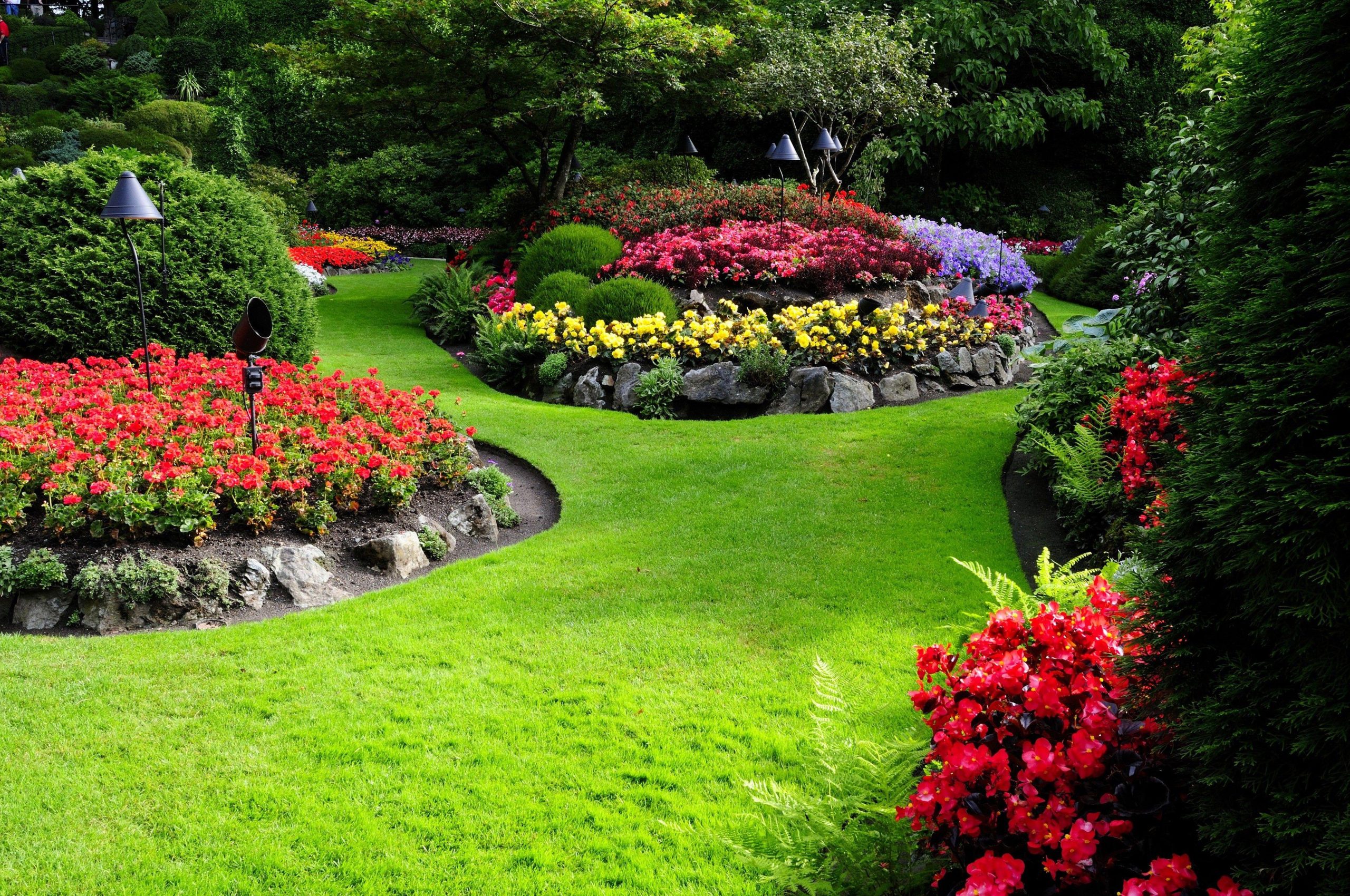Growing your own fruits, vegetables, and herbs in an edible garden is a fulfilling and practical endeavor. Not only does it provide you with fresh, nutritious produce, but it also allows you to engage with nature, reduce your carbon footprint, and save money on groceries. Whether you have a large backyard or a small balcony, you can cultivate a thriving edible garden by understanding the basics of gardening and choosing the right plants for your space. This guide will cover everything you need to know to start and maintain an edible garden, from planning and planting to maintenance and harvesting.
Why Grow an Edible Garden?
There are numerous benefits to growing your own edible garden:
1. Freshness and Flavor: Homegrown produce is often fresher and more flavorful than store-bought options, as you can harvest it at its peak ripeness.
2. Nutritional Value: Growing your own fruits, vegetables, and herbs allows you to control the use of pesticides and fertilizers, ensuring healthier and safer food.
3. Cost Savings: While starting a garden may require an initial investment, the long-term savings on groceries can be significant.
4. Sustainability: Growing your own food reduces the carbon footprint associated with transporting produce from farms to stores.
5. Enjoyment and Satisfaction: Gardening is a rewarding hobby that provides physical exercise, mental relaxation, and a sense of accomplishment.
Planning Your Edible Garden
Successful gardening begins with careful planning. Here are the key steps to plan your edible garden:
1. Assess Your Space
Evaluate the space you have available for your garden. Consider factors such as sunlight, soil quality, and water access. Most fruits, vegetables, and herbs need at least 6-8 hours of sunlight per day. If you have limited space, consider container gardening or vertical gardening techniques.
2. Choose Your Plants
Select plants that suit your climate, soil, and available space. Here are some beginner-friendly options:
Vegetables:
– Tomatoes: Easy to grow and highly productive.
– Lettuce: Quick-growing and can be harvested multiple times.
– Carrots: Require deep, loose soil but are otherwise easy to grow.
– Peppers: Both sweet and hot varieties thrive in warm weather.
– Beans: Bush and pole beans are productive and easy to grow.
Fruits:
– Strawberries: Great for small spaces and can be grown in containers.
– Blueberries: Require acidic soil but are otherwise low-maintenance.
– Raspberries: Perennial plants that produce fruit year after year.
– Apple Trees: Dwarf varieties are suitable for small gardens.
Herbs:
– Basil: Perfect for summer and great in many dishes.
– Mint: Easy to grow but can be invasive, best in containers.
– Parsley: Hardy and versatile.
– Rosemary: Drought-tolerant and aromatic.
– Thyme: Low-growing and ideal for small spaces.
3. Prepare Your Soil
Healthy soil is crucial for a successful garden. Test your soil to determine its pH and nutrient levels. Most vegetables and herbs prefer slightly acidic to neutral soil (pH 6-7). Improve your soil by adding organic matter such as compost, aged manure, or peat moss. This enhances soil structure, fertility, and water retention.
4. Plan Your Layout
Organize your garden to maximize space and plant health. Group plants with similar sunlight, water, and soil needs together. Consider using raised beds, containers, or vertical supports to optimize space. Ensure adequate spacing between plants to allow for growth and air circulation, which helps prevent disease.
5. Gather Tools and Supplies
Invest in basic gardening tools such as a trowel, pruning shears, gloves, watering can, and garden hose. Consider additional supplies like stakes, trellises, and plant labels to support and organize your garden.
Planting Your Edible Garden
Once you have planned your garden, it’s time to start planting. Follow these steps for successful planting:
1. Start Seeds Indoors
For many plants, especially those with a long growing season, it’s beneficial to start seeds indoors. Use seed trays or pots filled with seed-starting mix. Keep the soil moist and provide adequate light, either from a sunny window or grow lights. Once seedlings have grown strong enough and the outdoor conditions are suitable, you can transplant them into your garden.
2. Direct Sowing
Some plants, such as carrots and beans, do better when directly sown into the garden. Follow the seed packet instructions for planting depth and spacing. Water gently after planting and keep the soil moist until seedlings emerge.
3. Transplanting
When transplanting seedlings, handle them carefully to avoid damaging their roots. Dig a hole slightly larger than the root ball, place the seedling in the hole, and fill in with soil. Water thoroughly after transplanting to help the plant establish itself.
4. Companion Planting
Consider companion planting to enhance plant health and yield. Some plants, when grown together, can benefit each other by repelling pests, improving soil fertility, or providing structural support. For example, planting basil near tomatoes can enhance tomato flavor and deter pests.
Maintaining Your Edible Garden
Regular maintenance is essential to keep your garden healthy and productive. Here are some key tasks:
1. Watering
Proper watering is crucial for plant health. Water deeply and consistently, aiming to keep the soil evenly moist. Avoid overhead watering, which can promote disease. Instead, water at the base of plants to minimize leaf wetness. Early morning is the best time to water, as it allows plants to absorb moisture before the heat of the day.
2. Mulching
Mulch your garden beds with organic materials such as straw, wood chips, or compost. Mulching helps retain soil moisture, suppress weeds, and regulate soil temperature. It also adds organic matter to the soil as it decomposes.
3. Weeding
Regular weeding prevents weeds from competing with your plants for nutrients, water, and sunlight. Remove weeds by hand or use a hoe to cut them off at the soil surface. Mulching can also help reduce weed growth.
4. Fertilizing
Feed your plants with organic fertilizers to promote healthy growth. Compost, aged manure, and commercial organic fertilizers provide essential nutrients. Follow the recommended application rates and timing for each type of plant. Avoid over-fertilizing, which can harm plants and the environment.
5. Pruning and Training
Prune and train plants as needed to improve air circulation, reduce disease risk, and increase yield. For example, prune tomato plants to remove suckers and support them with stakes or cages. Train climbing plants like beans and cucumbers to grow on trellises for better space utilization.
6. Pest and Disease Management
Monitor your garden regularly for signs of pests and diseases. Use organic pest control methods such as hand-picking insects, using insecticidal soaps, or introducing beneficial insects like ladybugs. Practice crop rotation and proper spacing to reduce disease risk. Remove and dispose of any diseased plants promptly to prevent the spread of infection.
7. Harvesting
Harvest your crops at the right time for the best flavor and nutrition. Use clean, sharp tools to avoid damaging plants. Regular harvesting can also encourage continuous production. For example, picking beans and cucumbers frequently promotes more fruiting.
Extending the Growing Season
To maximize your garden’s productivity, consider techniques to extend the growing season:
1. Cold Frames and Hoop Houses
Cold frames and hoop houses provide protection from frost and extend the growing season for cool-season crops. These structures trap heat and create a microclimate that allows plants to grow earlier in the spring and later into the fall.
2. Row Covers
Row covers made from lightweight fabric can protect plants from frost, pests, and harsh weather. Use them to cover plants during unexpected cold snaps or to shield crops from insects.
3. Greenhouses
Greenhouses offer a controlled environment for year-round gardening. They allow you to start seeds early, grow heat-loving plants in the winter, and protect plants from adverse weather. Greenhouses can range from simple, small structures to larger, more complex setups.
4. Succession Planting
Succession planting involves planting crops in intervals to ensure a continuous harvest. For example, plant a new batch of lettuce or radishes every two weeks to maintain a steady supply. This technique makes the most of your garden space and keeps it productive throughout the growing season.
Creating an edible garden is a rewarding endeavor that brings fresh, nutritious produce to your table while connecting you with nature. By understanding the basics of gardening, choosing the right plants, and maintaining your garden diligently, you can enjoy the benefits of homegrown fruits, vegetables, and herbs year-round. Whether you’re a seasoned gardener or a beginner, the journey of cultivating an edible garden offers endless opportunities for learning, growth, and satisfaction. Happy gardening!




